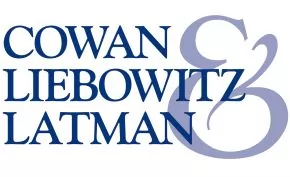In 2015, Apple Inc. applied to register APPLE MUSIC as a mark for a long list of services including "live musical performances." Charles Bertini, a professional jazz musician, opposed that application in the Trademark Trial and Appeal Board (TTAB) on the ground that he had been using the unregistered mark APPLE JAZZ for "live musical performances" since 1985. This seemingly simple fact pattern turned into an appellate decision on an issue of first impression.
Although Apple applied for, and began to use, the mark APPLE MUSIC for its music streaming service nearly thirty years after Bertini's priority date, the TTAB dismissed Bertini's opposition and approved Apple's application. It found that Apple had priority by tacking its application for "live musical performances" to a registration it had purchased from Apple Corps, the Beatles' record company, of APPLE for "gramophone records featuring music" having a date of first use in 1968, seventeen years earlier than Bertini's priority date. [Author's Note: Today we would call "gramophone records" either phonograph records, compact discs, or sound recordings.]
Bertini appealed to the U.S. Court of Appeals for the Federal Circuit (CAFC), which reversed the TTAB's decision and refused Apple's application. The parties agreed that there was a likelihood of confusion between the respective marks, so the only dispute concerned priority.
The CAFC stated that the standard for tacking an application to an earlier registration is strict, with the party seeking to tack bearing the burden to show that the old and new marks create the same, continuing commercial impression so that consumers would consider both as the same mark. This standard previously had been applied to cases in which the old and new marks had been used for the same goods or services. But this standard had never before been applied to marks for different goods or services. Put differently, the issue presented in this case was whether a trademark applicant can enjoy priority for every good or service listed in its application merely because it has priority through tacking for a single good or service listed in its application. The CAFC held that it cannot.
The CAFC said that, although an opposer can block a trademark application in full by proving priority of use and likelihood of confusion for any of the services listed in the application, the reverse is not true—the trademark applicant cannot establish priority for all of its listed services simply by proving priority for a single listed service.
In this case, the CAFC held that Apple's attempt to tack to the 1968 use of APPLE for "gramophone records" did not give Apple priority for "live musical performances" or any of the other services listed in its application because they were not "substantially identical." That is, the new goods or services were not within the normal evolution of the previous line of goods or services.
The CAFC decided that no reasonable person could conclude that the "live musical performances" listed in the Apple application were substantially identical to the "gramophone records" listed in the earlier registration. Therefore, Bertini had priority of his use of APPLE JAZZ for "live musical performances" notwithstanding Apple's earlier rights in APPLE for "gramophone records." Since likelihood of confusion had been agreed, Bertini's priority entitled him to prevail in his opposition in its entirety against Apple's application to register APPLE MUSIC mark for all of the services listed in Apple's application.
Charles Bertini v. Apple Inc., No. 2.21-2301 (Fed. Cir. April 4, 2023).
The content of this article is intended to provide a general guide to the subject matter. Specialist advice should be sought about your specific circumstances.

